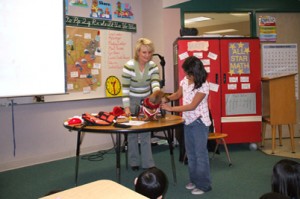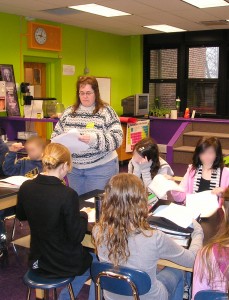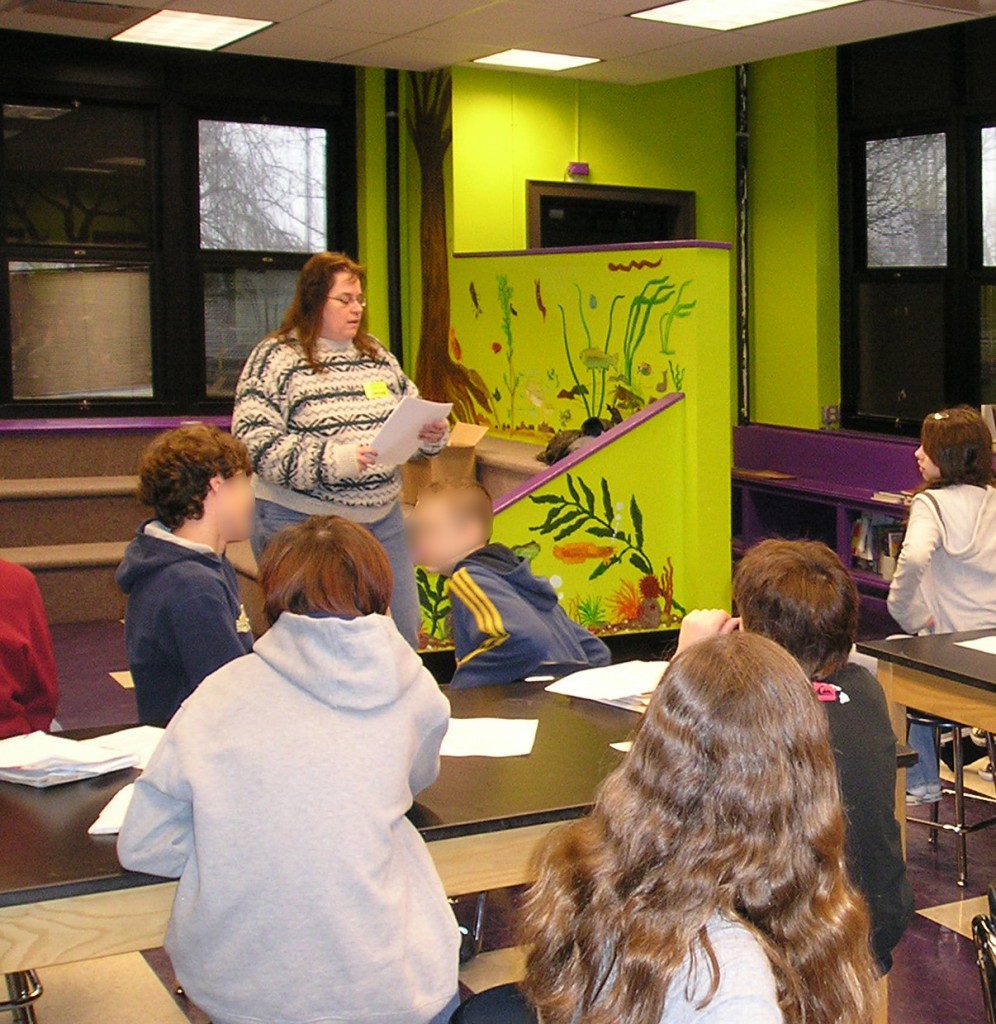One of the most effective ways to promote your books to schools is to develop teaching units that can be integrated easily into existing curricula.

Remember: As with most forms of free publicity, schools aren’t interested in promoting your book to students and their parents. They ARE interested in what valuable content/substance you can add to their existing lessons through your book’s subject. If you remember that your material must work in service to their broader goals of teaching concepts in an interesting way, your material is likely to be favorably received and actually used.
You first need to think about all the ways your book’s subject could fit into the standard disciplines:
- reading/spelling
- writing/grammar
- math
- science
- social studies/history
- physical education
- art
- music
Use Your Imagination
This exercise should be pretty easy, especially for fiction writers, since it involves making connections where there previously were none: Think about each separate teaching discipline, then imagine a creative approach you might take to make your content relevant to that segment. Obviously, not all books will fit in all teaching categories, but you may surprise yourself with the connections you can make.
As an example, I’ll use my first self-published book, a narrative nonfiction documentary of a historic weather disaster. Here’s how I can imagine Devastation on the Delaware: Stories and Images of the Deadly Flood of 1955 fitting into several standard disciplines:
Reading/Spelling – Create a unit that uses several excerpts from the book. One will be followed by questions that strengthen readers’ close reading and comprehension skills; one will introduce ten new vocabulary words, asking readers to define them according to their context; another can be mined for spelling words.
Writing/Grammar – Pull an excerpt that discusses a diary kept during the flood. Use that section as the basis of an exercise in writing a diary entry using the 5 Ws. This could be tweaked to be written as the classic journalistic inverted pyramid for older students. Other excerpts could be pulled out to show what kind of research was required to dig up the facts, organize them into a coherent narrative, and fit them into the larger story. Still other dialogue excerpts could be used to show how people often neglect proper grammar when speaking, especially when in a hurry or under duress.
Math – There are all kinds of applied math problems that could be pulled from this narrative: How much does one inch of rainfall covering one acre weigh? What’s the formula to determine the hydraulic force of two feet of water moving at 8 mph? If a river’s level rises beyond flood stage, how far out from the banks will it spread once it’s a foot over flood stage? Story problems: If a breach forms in a canal wall that’s 15 feet thick at its base, 7 feet thick at the top, and 10 feet high, how many sandbags measuring 2 ft. x 3 ft. x 1 ft. will it take to fill it? If six men can each move six sandbags per minute, how long will it take them to fill that gap?
Science – The no-brainer here is environmental science and weather: What conditions are required for a hurricane to form over the Atlantic Ocean? How does one storm continue cycling to produce extreme amounts of rainfall? What causes a hurricane to lose so much power once it’s over land? Why is it a bad idea to straighten a waterway? Could such a devastating flood ever happen again? Why or why not?
Social Studies/History – The social studies angle could deal with how rumors spread in a panicked population; the political ramifications of not enforcing ordinances against building in the flood plain; how the flood changed the way life developed in the river valley regarding location of stores and living space, traffic patterns from washed-out bridges. History could be served simply by pulling a few dramatic excerpts that address local, regional and state history as affected by the flood.
Physical Education – My book contains an account of an amazing helicopter rescue that was only successful because the people being rescued (camp counselors between 17-19 years old) were physically fit and prepared for what they needed to do to help save themselves.
Art – Younger kids could have a project in which they draw pictures of some of the more dramatic scenes from the book, while older kids could create memorials to those who died in the event.
Music – Groups of kids could work together to write lyrics and compose music for a ballad about the Flood of ’55.
Help From On High
If you can’t come up with much, don’t worry. Most state departments of education maintain websites containing their grade level standards for curriculum content in every teaching discipline. They’re pretty detailed insofar as what content is required, and this might help you spark some ideas. These curriculum standards are freely available to anyone willing to take the time to study them. It’s possible to develop lesson plans for teaching units in as many of these disciplines as your book pertains to. It involves some work, but you can develop one unit at a time and adjust it slightly for different grade levels.
It’s quite likely that you’ll find your efforts worthwhile: You never know when your book’s lesson might catch on among teachers, who are famous for both sharing what works and lobbying for official adoption of effective material. It only takes one such scenario for your book to become a mandatory or at least a recommended text for an entire school district, so your investment in development can really pay off.
Once you’ve finished creating your units, one way to make them work hard for you while you’re doing other things is to post them as PDFs in your online newsroom. This makes them available not just for download by grateful teachers looking for fresh material, but also makes them searchable by web crawlers that will help make them discoverable by those very instructors looking for exactly what you’re offering.
Most often, you’ll want to develop for a K-12 grade level, but some books might lend themselves to post-secondary level adoption. These more advanced teaching units should contain tightly focused readings, discussion questions, and an assignment for a 45-minute class period. Including a quiz or related game is optional. Remember to use social media to drive awareness of these offerings.
How-To Help Is On The Way
Ideally, not only will your books make it into classrooms, but so will you! It’s a rare teacher who won’t want to meet the author of a book whose content she’s using in her classroom, and to have the author come speak to her students on that subject. For more information about making the most of such classroom visits as a marketing and promotional tool, learn about the definitive guide to such activities: Pioneering author Barbara Techel is currently at work on CLASS ACT, the ultimate how-to guide for authors wanting to get in front of audiences in schools and classrooms.
I hope you’ve enjoyed this three-part series and will find it helpful in getting your books into classrooms and beyond.

